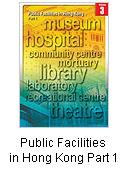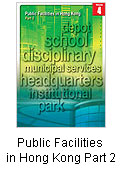|
|||
| HONG KONG | <Search <Archives <eBulletin | ||
March 31, 2017 19 building plans approved in January The Buildings Department approved 19 building plans in January - three on Hong Kong Island, six in Kowloon and 10 in the New Territories. Eleven were for apartment and apartment-commercial developments, two for commercial developments, three for factory and industrial developments, and three for community services developments.
Consent was given for work to start on 13 building projects that will provide 239,145 sq m of gross floor area for domestic use, involving 3,812 units, and 226,714 sq m of gross floor area for non-domestic use. The department received notification of the start of work for 17 building projects. It also issued 16 occupation permits - four on Hong Kong Island, four in Kowloon and eight in the New Territories. The buildings certified for occupation have 12,305 sq m of gross floor area for domestic use, involving 181 units, and 71,728 sq m for non-domestic use. The declared cost of new buildings completed in January totalled $3.6 billion. On March 18, Secretary for Development Eric Ma gave these remarks at the Symposium on Brown Root Rot Disease Management, adding the government is combating the source of the disease through proper removal of infected trees and soil sanitation. Scientists and tree experts from Hong Kong, the Mainland, the US, Australia and Taiwan shared their latest research findings at the symposium. Mr Ma said brown root rot disease has no known cure yet, and can pose a serious threat to public safety. "BRR can be easily spread through root contact, infected soil, surface and sub-surface water, and even through the air. This can lead to swift deterioration in the health of the tree, causing eventual decay and irreversible structural damage to tree roots, posing a serious threat to public safety. "Equally concerning is the impact on our urban landscape, as we cannot currently re-use the infected site for replanting for a number of years." In 2012, the government released guidelines on managing the disease. It carries out annual tree risk assessment and routine inspections. The Development Bureau has collaborated with research institutions to conduct fungal surveys, diagnoses and preventive studies to enhance its understanding of the disease, which will help build a more holistic and successful management strategy. 
|
|







